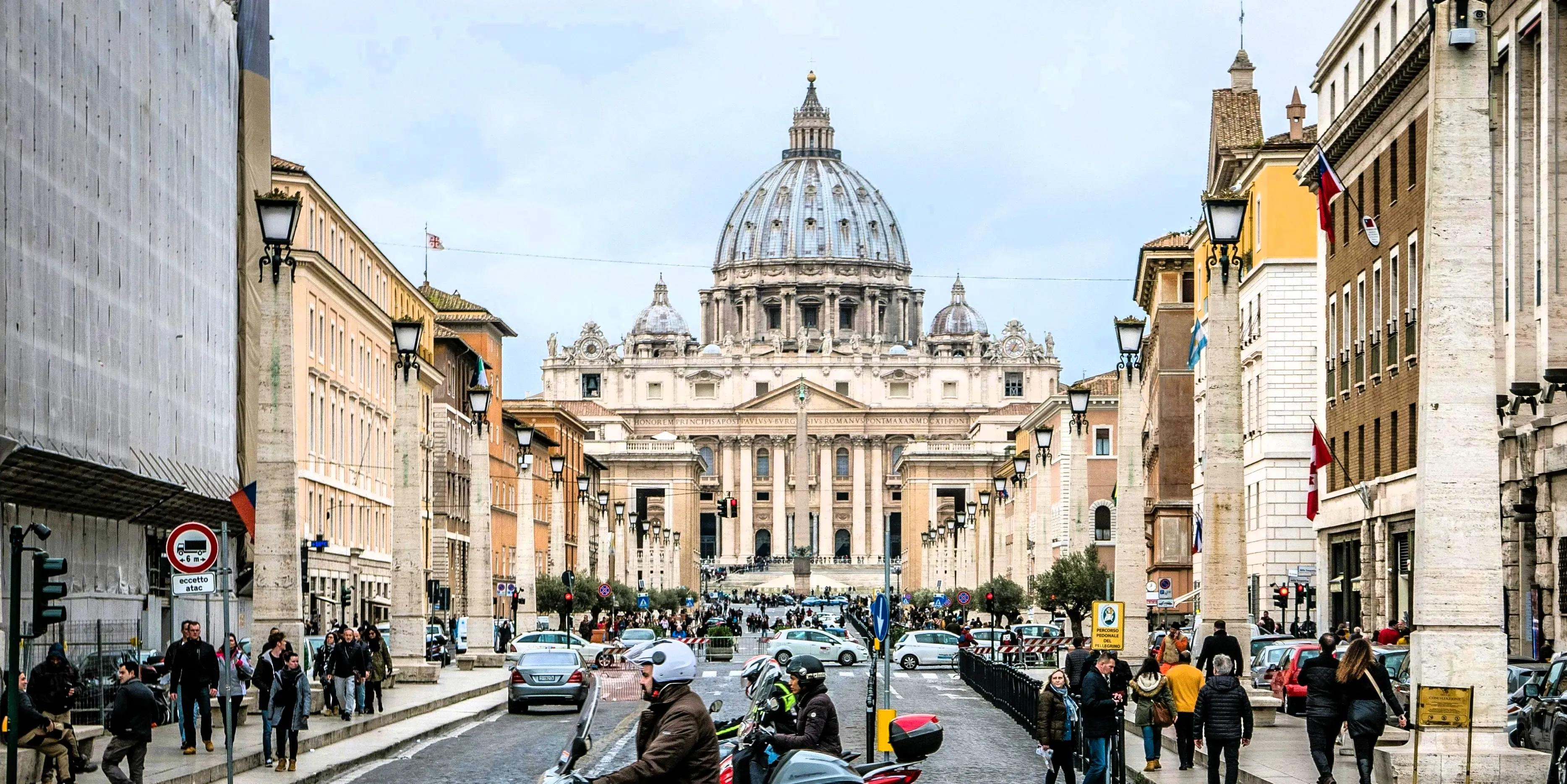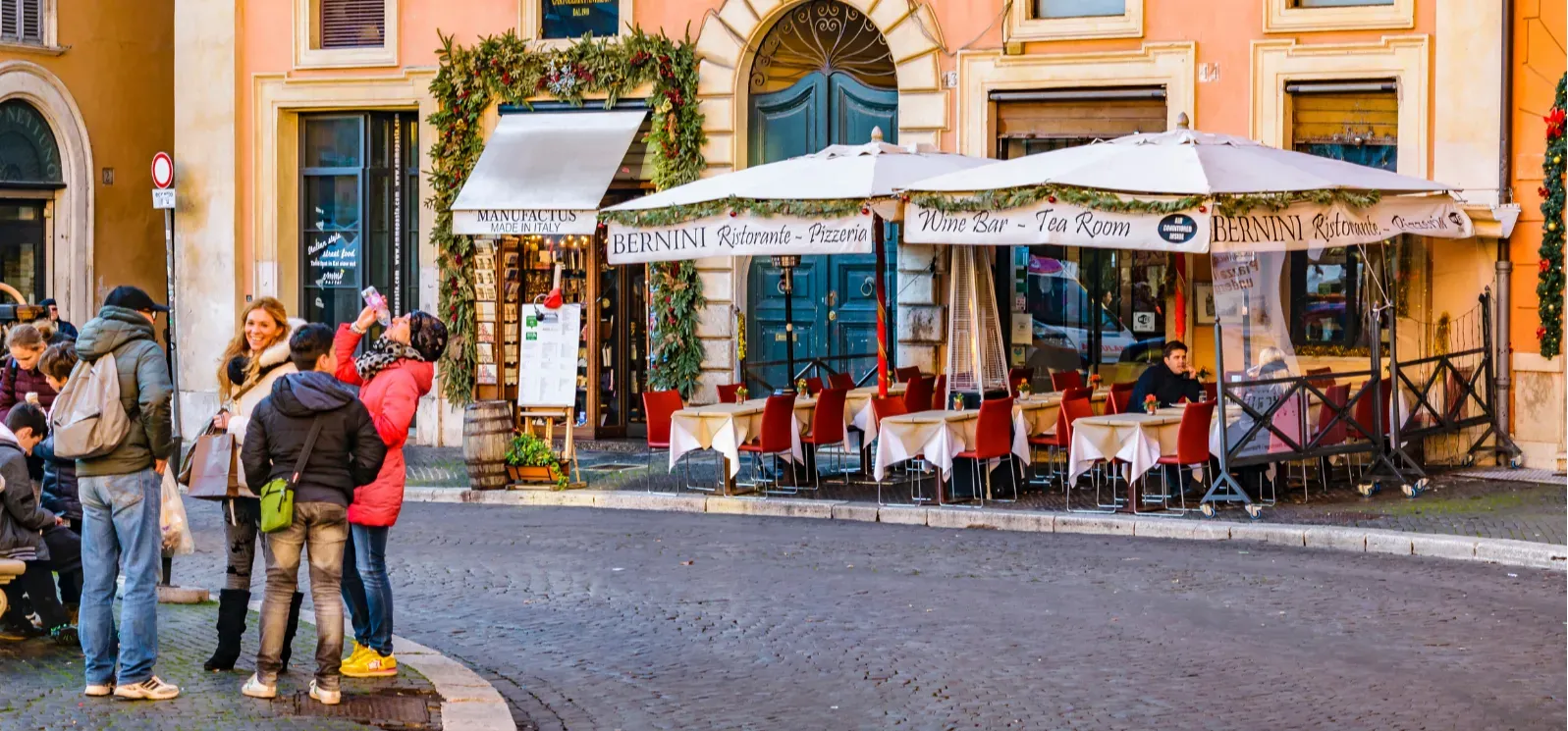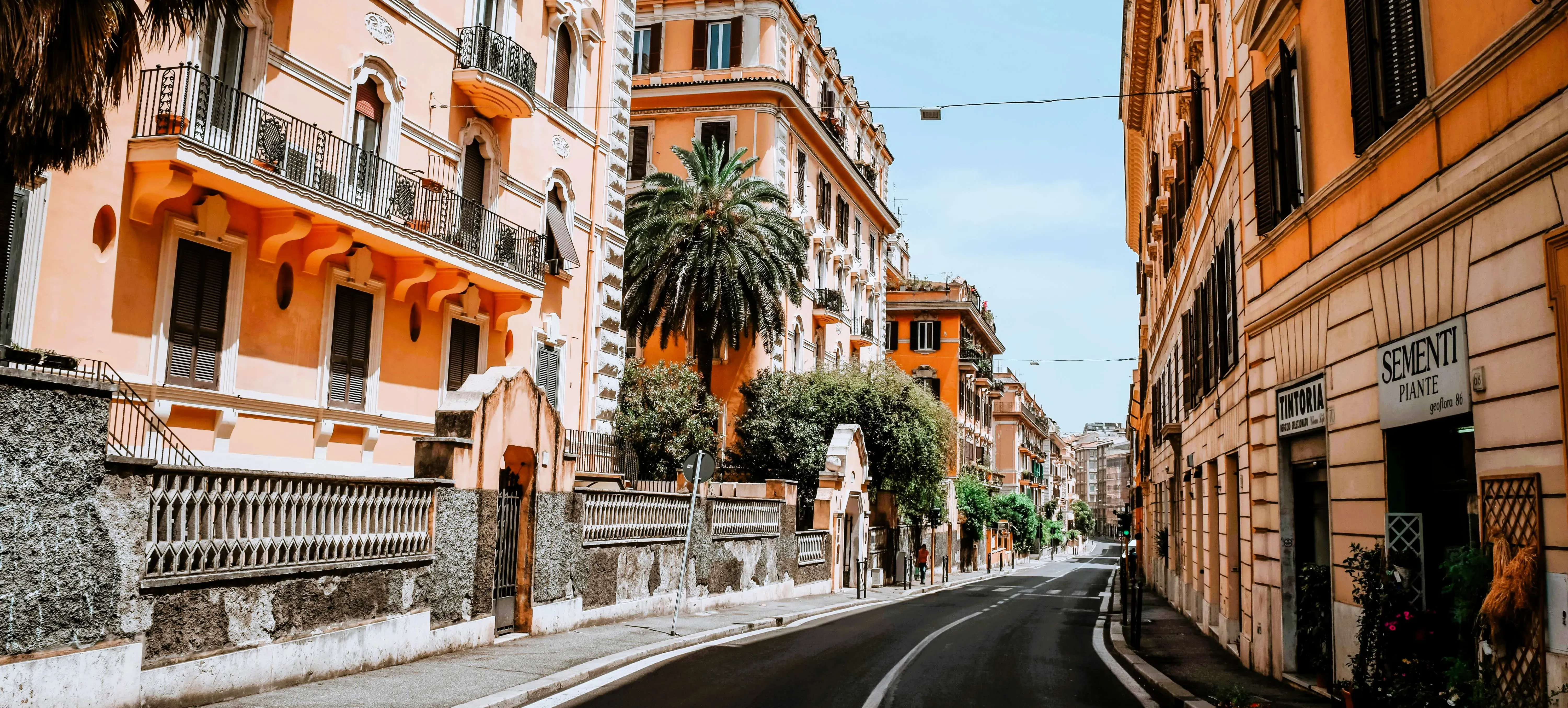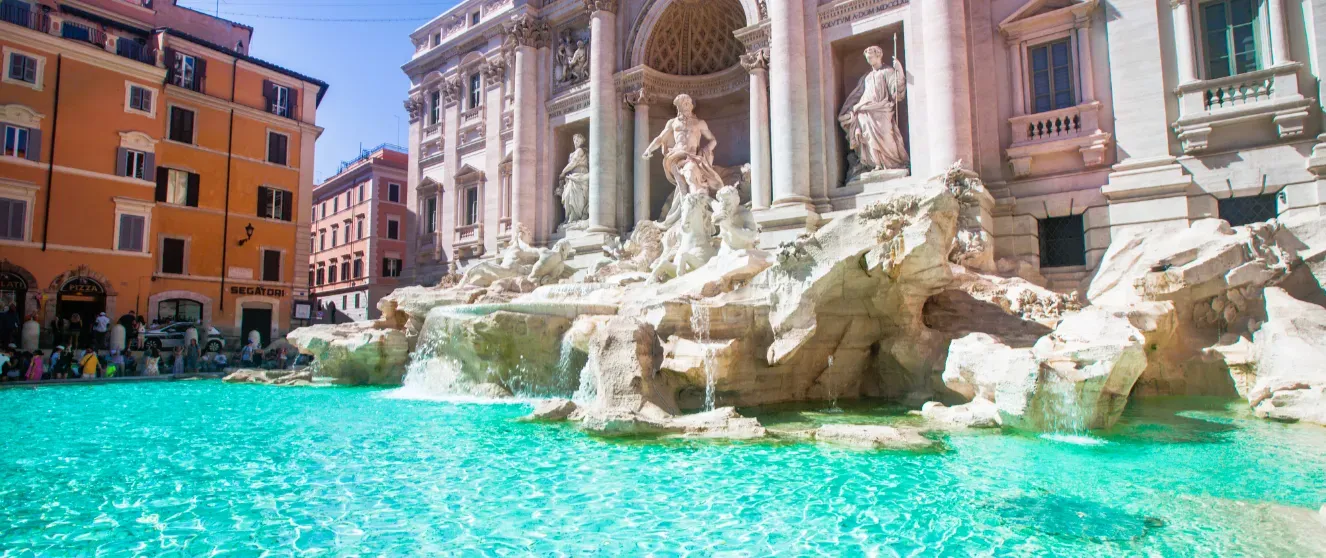Moving to Rome, Italy
Welcome to Rome, where history powers innovation!
Rome is Italy’s capital and largest city, a place where millennia of art, architecture and civic life set the stage for a thoroughly modern economy. Its historic center is a UNESCO World Heritage site, and the city keeps adding to that legacy, like the Appian Way’s recent inscription that celebrates Rome’s ancient infrastructure genius.
For tech professionals, Rome’s talent pipeline and research depth are big advantages. Sapienza University alone counts about 122,000 students and is consistently ranked among Italy’s top universities, feeding local employers with engineers, data scientists and designers.
The startup scene is anchored by homegrown accelerators and venture platforms. LVenture Group and its LUISS EnLabs program have supported 130 plus accelerated startups and a portfolio with more than €170 million raised, creating a visible landing pad for early stage founders and tech talent. The city is also building a coordinated innovation hub through the Rome Technopole, a foundation uniting universities, research centers and industry around digitalization, energy transition and health.
Rome’s role as a global policy capital creates distinctive career paths too. It hosts the headquarters of major UN agencies in food and agriculture, including FAO near the Baths of Caracalla and the World Food Programme at Parco de’ Medici, bringing international projects and mission driven tech work into the local economy.
Connectivity is strong for a Southern European hub. Fiumicino and Ciampino handled more than 53 million passengers in 2024, widening access to European and intercontinental routes for business travel and distributed teams.
Economically, the Lazio region, with Rome at its core, sits above the national average for prosperity. ISTAT reports Lazio’s GDP per capita at about €41,800 in 2023, comfortably ahead of Italy’s overall figure, which signals deeper consumer demand and a broader services base where tech, media, aerospace and life sciences intersect.
Why relocate here
- Work meets lifestyle. You get Mediterranean weather, long strolls through districts like Trastevere after work, and weekend bike rides on the Appian Way, plus a steady drumbeat of conferences and meetups tied to universities and incubators.
- International outlook. With FAO and WFP in town, there is outsized demand for data, cloud, cybersecurity and GIS skills applied to real world impact.
- Growing tech ecosystem. Accelerators and public programs are investing in startups and research transfer, while the Rome Technopole links labs and companies to speed commercialization.
- Easy access. Air links through Fiumicino make remote friendly and hybrid setups practical if your team is spread across Europe.
Lifestyle and Culture

City lifestyle
Rome is relaxed and social, yet it runs on a surprisingly steady daily rhythm. People work standard office hours, then flow into the early evening passeggiata, a leisurely stroll that often blends into aperitivo with friends between roughly 6 and 8 p.m. Restaurants open later than in Northern Europe, so dinner commonly starts after 8 p.m., and piazzas feel alive well past midnight in mild weather. Summer brings an outdoor culture shift with Estate Romana, a city wide program of open air cinema, concerts, and pop up events from the center to the coast at Ostia.
August has its own rules. Around Ferragosto on August 15 many Romans take holiday, some businesses pause, and neighborhoods feel quieter while beaches and mountains fill up. Plan errands and dining with this in mind.
For tech professionals: after work, networking often happens in casual settings, from coworking community events to terrace meetups. Expect many meetups to start later in the evening to match local dining hours.
For curious newcomers: embrace the rhythm, plan museum mornings, siesta or shade in the afternoon, then explore aperitivo spots and evening programming.
Cultural highlights and attractions
Start with the ancient heart. The Colosseum, Roman Forum and Palatine Hill are managed together by the Parco archeologico del Colosseo, which publishes official visiting info and events. Booking directly through the park avoids confusion around ticket types. Across the river, the Vatican Museums house the Sistine Chapel and vast collections, with timed entry available on the official site.
Rome also excels in contemporary culture. MAXXI, Italy’s national museum of twenty first century arts designed by Zaha Hadid, anchors a thriving modern scene in Flaminio. Film lovers should note the Rome Film Fest each October at the Auditorium Parco della Musica.
Outdoors, the Appia Antica Regional Park lets you bike or walk on ancient basalt stones through pines and ruins, now further recognized thanks to UNESCO status for the Appian Way.
Local traditions animate the calendar. The riverside Estate Romana fills warm nights, Trastevere’s Festa de’ Noantri brings processions and street culture in July, and Natale di Roma on April 21 marks the city’s legendary birthday with historical reenactments.
For tech professionals: slot big site visits on lighter workdays and keep evenings free for cultural events or community meetups.
For curious newcomers: mix icons with neighborhoods, and balance indoor museums with parks to beat the heat.
Popular neighborhoods
Below are areas that consistently attract newcomers. Each has a distinct feel, different housing stock, and varying access to green space or tech hubs.
-
Trastevere
Bohemian lanes, golden light, and a strong night scene. Historic apartments with high ceilings and tile floors, limited elevators, and lively piazzas around Santa Maria. Great for car free living and walkability to the center and Janiculum Hill.
Why it appeals: creative energy and countless trattorias. Watch outs: noise on weekends.
-
Monti
Central and characterful, with independent boutiques and wine bars, steps from the Forums and a short hop to Termini. Many renovated older buildings, small balconies, and rooftop terraces. Handy if you collaborate with teams at the LVenture and LUISS EnLabs hub by Termini.
Why it appeals: walk to meetings and meetups, strong café culture.
-
Ostiense and Garbatella
Industrial cool turned creative cluster, with street art, Eataly’s food emporium, and the Talent Garden Ostiense campus that draws startups and digital workers. Housing mixes early twentieth century blocks with modern loft style conversions, and there is quick metro B access.
Why it appeals: close to coworking, lively dining, pragmatic rents.
-
Testaccio
A true Roman neighborhood known for its covered market and food heritage, quieter than Trastevere but still central. Apartments are typically early twentieth century with solid layouts and courtyards. Excellent for families or anyone who prioritizes everyday conveniences.
Why it appeals: great produce market, strong community feel.
-
Prati
Elegant grid streets near the Vatican, with Belle Époque buildings, wide sidewalks, and good schools. Calm by day, lively on shopping avenues like Via Cola di Rienzo. Popular with families and professionals who want space and services within walking distance.
Why it appeals: sophisticated vibe, efficient transport, larger apartments.
-
Parioli and Trieste
Leafy, upscale, and residential, bordering Villa Ada and convenient to LUISS University. Expect doorman buildings, terraces, and family friendly parks. Great for those who value quiet nights and quick school runs.
Why it appeals: green space plus reputable schools and services.
-
Monteverde
On the hill above Trastevere with classic palazzi and townhouses, a strong neighborhood identity, and Rome’s largest urban park, Villa Doria Pamphilj, on the doorstep. Favored by families for its playgrounds and Sunday park life.
Why it appeals: abundant greenery, community feel, easy tram into the center.
For tech professionals: if regular trips to Termini or coworking are part of your week, Monti, Esquilino, San Lorenzo, or Ostiense keep commutes short. If you want green space for resets and remote work breaks, consider Monteverde, Parioli, or Prati.
For curious newcomers: Trastevere and Testaccio reward walkers and food lovers, while Prati suits museum goers who like a calm base near the Vatican.
Cost of Living

Breakdown of major expenses
Housing
- Citywide asking rents average about €18.3 per m² per month. That means a typical 50 m² one-bedroom is commonly €900 to €1,200 depending on area and condition. Reference point: Termini and Esquilino are around €24 per m², while more peripheral districts are lower. Numbeo
- For a family-sized place, crowdsourced market data points to ~€1,227 per month for an 85 m² “normal area” furnished apartment. Premium central areas of Rome can reach ~€1,800 for the same size. Expatistan
Utilities
- Typical combined electricity, heating, cooling, water and gas for a 2-person household in 85 m² runs about €220 to €240 per month in Rome.
- If you want to estimate water precisely, Rome’s water utility (ACEA ATO 2) publishes per-m³ tariffs. A 2-person household using ~120 m³/year pays roughly €273 per year including water, sewer and treatment charges, which averages about €23 per month. Calculation uses ACEA’s 2025 tariff bands and the common per-capita consumption baseline.
Internet
- Home fiber plans are widely available in Rome. Typical entry prices are €27.95 to €29.95 per month from major providers, with promotional lows a bit under that.
Public transport
- The ATAC “Mensile Personale” monthly pass for travel inside Rome is €35. The annual Rome pass is €250 if that suits your commute.
- If you drive, the Ministry’s dashboard shows average fuel prices by region. In Lazio, petrol hovers around €1.70 per liter in late September 2025.
Food and groceries
- Everyday basket examples in Rome now: milk 1 l ~ €1.67, eggs (12) ~ €4.54, chicken breast 500 g ~ €5.46, apples 1 kg ~ €2.74, bread for 2 people ~ €1.27. Coffee culture remains affordable: a cappuccino ~ €2.06. Eating out, a basic lunch menu ~ €16. Expatistan
Insurance
- Most residents rely on Italy’s public health system (SSN). There are co-pays (“ticket”) for some visits, and emergency room non-urgent “codice bianco” carries a typical €25 co-pay, though regions vary. Agenzia Entrate
- Optional private health insurance to reduce waits or add coverage ranges widely. Recent market roundups suggest ~€250 to €750 per year per adult for individual plans depending on cover, with family bundles higher. Facile.it
- Tenant or contents insurance is inexpensive by international standards. Guides indicate ~€50 to €200 per year for an in-tenant liability and contents bundle, depending on limits and add-ons. Idealista
Entertainment and leisure
- Cinema tickets in local theaters are commonly €7 to €9 depending on day and format.
- Museums vary. The standard Colosseum ticket is €18 and includes the Roman Forum and Palatine for 24 hours. Parco archeologico del Colosseo
- Gym membership near business districts averages ~€59 per month. Expatistan
Local taxes and fees to remember
- Rome’s waste tax (TARI) is charged annually and varies by dwelling size and number of occupants. The city and waste operator provide calculators and guidance. Plan for it in your budget, since it is billed to occupants.
Comparison
- Rome vs Milan: Using current asking rents, Rome’s average €18.3 per m² is about 19 percent cheaper than Milan’s ~€22.6 per m². For a 50 m² one-bedroom, that difference often translates to several hundred euros per month. Numbeo
- Rome vs other EU hubs: On aggregate consumer prices, Numbeo’s mid-2025 European rankings place Rome (index ~56.7) very close to Barcelona (57.0), which matches the on-the-ground feel that groceries, casual dining and transit sit in the same ballpark. Numbeo
Average Salaries in Tech

Salary ranges by role
Software engineer, full stack or generalist
-
Entry 0 to 2 years: €28,000 to €33,000
-
Mid 3 to 5 years: €33,000 to €45,000
-
Senior 6 to 10 years: €45,000 to €68,000
Reference points: Levels.fyi reports a Rome median total comp near €36,400, with the 25th percentile around €29,800 and the 75th around €45,600, plus a long tail to the low €60Ks at the 90th percentile. PayScale’s Italy data for software engineers clusters around the mid €30Ks, which aligns with Rome’s median.
Back end engineer
-
Entry: €27,000 to €32,000
-
Mid: €32,000 to €44,000
-
Senior: €44,000 to €60,000
Signals: PayScale’s Italy back end benchmark centers near €34,600, and Levels.fyi shows Rome back end medians just above €40,000, which is what pushes the upper mid band here.
Data analyst
-
Entry: €26,000 to €32,000
-
Mid: €32,000 to €40,000
-
Senior: €40,000 to €55,000
Why these numbers: PayScale’s Italy wide data analyst median sits near €30,200, while Rome specific medians commonly land just over €31,000, so senior roles that blend BI plus product or finance responsibilities tend to move into the low to mid €50Ks.
Data scientist
-
Entry: €28,000 to €35,000
-
Mid: €35,000 to €50,000
-
Senior: €50,000 to €70,000
Context: Levels.fyi places Rome’s data scientist median around €43,000 with a 75th percentile above €62,000. PayScale’s Italy data scientist median near €35,500 helps anchor the entry and mid bands.
DevOps engineer
-
Entry: €32,000 to €40,000
-
Mid: €40,000 to €55,000
-
Senior: €55,000 to €70,000
Reality check: Italy wide DevOps medians on PayScale sit in the mid €30Ks, while Rome specific submissions on Levels.fyi show total comp around €41,000. Senior figures creep into the €60Ks when cloud and security responsibilities expand.
Cloud engineer or platform engineer
-
Entry: €45,000 to €55,000
-
Mid: €55,000 to €70,000
-
Senior: €70,000 to €85,000
Why higher: ERI’s Rome specific modelling for cloud engineers averages around €69,600, consistent with national cloud engineer estimates in the mid €60Ks, so this is one of the few roles in Rome that regularly clears €70K at senior. ERI Economic Research Institute+1
Notes that affect all bands: compensation varies by contract type, sector, and whether the employer is an international organization or a domestic SME. Rome’s large public and multilateral footprint sometimes means lower base, higher stability, and richer leave, while product teams or scale ups tend to pay more cash for engineers building revenue lines.
How Rome compares
Versus Italy overall
Italy’s official earnings data show average hourly earnings in firms with 10 or more employees at €15.9 for women and €16.8 for men in 2022, which translates into annual totals that many Rome tech roles exceed even at mid level. This is one reason tech remains attractive here despite cost of living.
Independent compensation trackers also peg the overall Italian RAL around the low €30Ks. That supports the idea that a mid level engineer or data professional in Rome typically sits above the national average.
Versus Milan
Milan usually pays a premium. Levels.fyi shows a Milan software engineer median near €39,600 versus Rome’s €36,400, roughly an 8 to 10 percent bump for similar levels. This gap narrows when a Rome role is at a multinational or aligned to cloud and platform work.
Versus Barcelona and Berlin
For software engineers, Barcelona medians are higher than Rome. PayScale lists Barcelona around €45,800, while Berlin sits much higher near €60,500, reflecting deeper international competition. Rome’s median in the mid €30Ks is consistent with Italy’s overall market structure and cost base.
Tips to land the top of each band
- Show cloud impact. AWS or Azure deployments at scale, IaC, and SRE style metrics will push DevOps and platform roles toward the upper €60Ks and into the €70Ks. ERI’s Rome cloud figures quantify why these skills command more.
- Combine analytics with product. Data analysts who own experimentation pipelines or revenue reporting typically clear €40K faster than reporting only roles, consistent with medians near €30K for pure analyst tracks.
- Leverage Rome’s international ecosystem. Experience with multilateral standards or public sector data can offset slightly lower base with strong benefits and career stability.
Family-Friendliness

Overview of family services
Schools and childcare at a glance
Rome’s public system is structured by age: nidi for 0 to 3, scuole dell’infanzia for 3 to 5, then primary and middle school from 6 to 14. For 0 to 3, the city publishes an annual call and you apply online for municipal nurseries and partner providers; for the 2025–26 year, applications ran 18 February to 27 March 2025 with a centralized list of facilities. Fees are income based via ISEE and the city provides an online fee simulator so families can estimate their monthly co-payment.
For scuole dell’infanzia 3 to 5, Rome’s call for 2025–26 was 16 January to 10 February 2025. If you are arriving midyear, check the same portal for late openings or vacancies. For primary and lower secondary, use the national Scuola in Chiaro tool to search public schools near your future address and compare programs.
International school options
Two of the largest are St George’s British International School and the American Overseas School of Rome (AOSR). St George’s runs IGCSE and IB programs across two campuses and publishes its fee schedule online; lunch is included in annual tuition. AOSR is not-for-profit and offers both AP and IB tracks with transparent tuition for 2025–26. Francophone families often choose Lycée Chateaubriand, part of France’s AEFE network.
Childcare costs and national support
Municipal nursery fees are income based and approved annually by Rome; you can verify rules and simulate your contribution on the city portal. On top, Italy’s Bonus Asilo Nido helps with nursery or certified home care costs. For children born before 1 January 2024, the annual cap is €3,000 with ISEE up to €25,000, €2,500 for ISEE €25,001 to €40,000, and €1,500 above that. For children born on or after 1 January 2024, families with ISEE up to €40,000 can access €3,600 per year; above €40,000 the cap is €1,500. Applications are online through INPS.
Healthcare for kids
Once you establish residency, you register with the Servizio Sanitario Nazionale and select a free family pediatrician online through your local health authority in Rome or via the Salute Lazio portal. Routine vaccines follow the Lazio schedule and can be booked, like other specialist visits, through the regional ReCUP system at 06 9939 or online. If you need tertiary pediatric care, Ospedale Pediatrico Bambino Gesù is Rome’s dedicated children’s hospital with English-language access and its own booking channels.
Getting around with children
Within Rome, children up to 10 years travel free on ATAC services when accompanied by an adult with a valid ticket. Strollers are allowed at no extra charge, with simple rules for folding on buses and basic safety on the metro.
Appealing features for families
Parks, playgrounds and easy nature
Rome’s green spaces make weekend planning simple. Villa Borghese anchors family time with bike paths, pedal boats and the Bioparco zoo, which publishes seasonal opening hours and rates. Inside the park, Casina di Raffaello is a city-run creative play center for ages 2 to 14.
To the southwest, Villa Doria Pamphilj in Monteverde is Rome’s largest historic park at roughly 180 hectares, perfect for long stroller walks and playground stops. On the southeast side, the Appia Antica and Parco degli Acquedotti weave archaeology with meadows and easy family cycling itineraries.
Hands-on museums and rainy-day options
The star for under-12s is Explora – Il Museo dei Bambini near Piazza del Popolo, with timed entry and tactile exhibits that turn learning into play. For a classic day outdoors, Luneur Park in EUR is a historic rides park built for kids, with family ticket bundles and seasonal passes.
Neighborhoods families consider
Many relocating families pick areas that balance green space and schools. Monteverde is prized for calm streets and direct access to Villa Doria Pamphilj; Trieste–Salario and Parioli mix residential blocks with playgrounds and quick links to Villa Ada; EUR offers newer housing, schools and lakeside paths around the Laghetto. Browse parks and cultural sites on the city’s heritage pages as you map school commutes.
Practical tips from locals
Enroll early for nidi and scuole dell’infanzia and keep documents handy for the city’s online system. Use Scuola in Chiaro to shortlist primary schools close to your likely home address, then verify canteen fees and after-school services with the school office. For healthcare, select your pediatrician as soon as you have your local health card and keep the Lazio vaccination calendar bookmarked. When exploring, remember kids ride free and strollers are welcome on transit, which makes weekend museum-park combos very doable in central Rome.
Relocation Resources

Rentals and home search
- Idealista. Large marketplace with strong map filters by neighborhood and transit. Good for scanning price bands across central and outer districts. Idealista
- Immobiliare.it. Italy’s biggest portal by listing volume, with up-to-date “affitto” pages specific to Rome. Immobiliare.it
- Casa.it. Useful complements to the two above, including filters for proximity to metro lines and “da privati” owner-listed homes. Casa
- Tecnocasa. National agency network with many Rome branches. Helpful when you want an agent handling viewings and paperwork. tecnocasa.it
- Gabetti. Established brokerage with extensive coverage across the city’s quartieri, from historic center to residential belts. gabetti.it
- Engel & Völkers Rome. Premium rentals in central and embassy districts if you need higher-end or corporate leases. Engel & Völkers
- Spotahome. Online, verified mid to long-stay furnished rentals, useful for landing pads while you apartment-hunt in person. Spotahome
Serviced and temporary stays
- The Social Hub Rome (San Lorenzo). Extended-stay rooms with coworking, laundry and rooftop pool, walkable to Termini. Good for 2 to 12 week transitions. The Social Hub
- Airbnb monthly stays. Easy month-to-month furnished options if you need a soft landing while you view long-term apartments. Airbnb
- Plum Guide. Curated long-stay homes if you prefer vetted, higher-end furnished rentals. Plum Guide
Full-service relocation partners
- Eres Relocation. Destination services, immigration and home search across Italy, with local Rome support for corporate moves. Eres Relocation Services
- Santa Fe Relocation. International mover with Italy coverage, door-to-door shipping plus home and school search add-ons. Santa Fe Relocation
- Crown Relocations Italy. Packing, shipping, storage and pet relocation, with mobility services and a dedicated move manager. Crownrelo
- Packimpex Italy. Destination services and settling-in support, now including Professional Relo as part of the group in Italy. packimpex.com
- R-Home Relocation (Rome). Boutique Rome-focused team for housing search, utility setup and local registrations. Rhome Relocation
Official steps and practical admin
- Change your residence with Roma Capitale. Online “Cambio di residenza” for you and your family once you have your lease. Comune di Roma
- Get your Codice Fiscale. Official guidance in English from Agenzia delle Entrate for foreign citizens. Agenzia Entrate
Utilities and connectivity (new home checklist)
- Water: MyAcea Acqua. Manage water activation or name changes for Acea ATO 2 via your online account. my.acea.it
- Electricity. Areti is the local distributor in Rome; for a new connection or activation you will interact via your supplier, for example Servizio Elettrico Roma or Acea Energia. areti.it
- Gas. Italgas Reti handles distribution. Use their portal for new connections or meter activation before you choose a supplier. Italgas.it
- Home internet. Widespread fiber from TIM and Fastweb with typical entry prices around 28 to 30 euro per month. Check your address for exact offers. tim.it
Job Market and Taxes

Current job openings
If you are exploring roles in Rome, start here: TieTalent jobs in Rome. TieTalent focuses on vetted tech positions, so it is a fast way to scan what is active.
Income tax overview in Italy
National income tax, IRPEF
Italy applies progressive IRPEF with three brackets for 2025: 23 percent up to €28,000, 35 percent from €28,001 to €50,000, and 43 percent above €50,000. This three-bracket setup, introduced for 2024, was made structural by the 2025 Budget Law.
Regional add-on in Lazio
On top of IRPEF you pay a regional surcharge based on where you live. Lazio’s 2025 rates are 1.73 percent up to €15,000, then 3.33 percent above that. There is also a €60 deduction for tax bases between €28,001 and €35,000, and a rule that disapplies a previous increase for incomes up to €28,000.
Municipal add-on in Rome
Rome applies an additional 0.9 percent, with a full exemption if your taxable income is €14,000 or below. The exemption was enlarged for 2025 by City Council Resolution 186 of December 19, 2024 and is recorded on the Finance Ministry portal.
Employee social security contributions
Employees typically contribute around 9 to 10 percent of gross pay to social security, with the employer contributing roughly 30 percent. Exact rates vary by sector and contract.
Useful payroll rules that can improve your net
- Many employees receive a thirteenth-month salary in December, sometimes a fourteenth in summer, depending on the collective agreement. Your RAL usually includes these.
- Eligible performance bonuses up to €3,000 can be taxed at a reduced 5 percent in 2025, which can meaningfully increase take-home if your employer uses this mechanism.
- The trattamento integrativo is a credit worth up to €1,200 per year for qualifying employees with lower incomes, applied directly in payroll when due. It continues to operate in 2025 subject to income conditions and interaction with your employment tax credits. Check your payslip notes or annual return to confirm entitlement.
Quick, illustrative calculation for a Rome employee
Below is a rough, before-credits example for a mid-level tech professional on €40,000 RAL in Rome. Assumes standard employee social security at 9.5 percent and uses Lazio and Rome 2025 add-ons.
- Employee social security about €3,800 so the IRPEF base ≈ €36,200.
- National IRPEF: €6,440 on the first €28,000 plus €2,870 on the next €8,200 equals €9,310.
- Lazio regional add-on: 1.73 percent on €15,000 (€259.50) plus 3.33 percent on the next €21,200 (€705.96) equals ≈ €965.
- Rome municipal add-on: 0.9 percent on €36,200 equals ≈ €326.
- Total income taxes ≈ €10,601 before employment credits and any treatment integrative.
- Approximate net after tax and employee social security ≈ €25,600 per year. Your actual net will usually be higher once employment credits are applied and can vary with contract details and benefits.
TieTalent: Where Teams Are Formed. Join for Free!